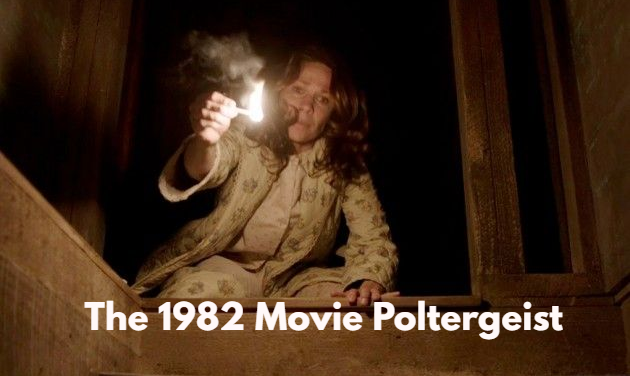The 1982 classic horror film Poltergeist, directed by Tobe Hooper and produced by Steven Spielberg, remains one of the most iconic and chilling films in the genre. Known for its unsettling supernatural occurrences and deeply disturbing scenes, Poltergeist has terrified audiences for decades. However, beneath the eerie atmosphere and the tale of a suburban family haunted by malevolent spirits lies a darker, real-life horror story—one that involves the controversial use of real human skeletons during the film’s production.
This revelation has sparked debates, questions, and even urban legends surrounding the curse of the Poltergeist franchise. This article dives deep into the history of the film, the decision to use real skeletons, the cultural impact of the controversy, and how it contributed to the eerie legacy of Poltergeist.
1. The 1982 Poltergeist: A Groundbreaking Horror Masterpiece
When Poltergeist was released in June 1982, it quickly became a sensation. The film combined supernatural horror with cutting-edge special effects that shocked audiences worldwide. It followed the Freeling family, whose home becomes a portal to the spirit world, unleashing paranormal activity and chaos. The film’s memorable scenes—including the little girl, Carol Anne, staring into a static-filled television and the nightmarish clown doll attack—cemented Poltergeist as a landmark in horror cinema.
However, what makes Poltergeist truly unsettling is not just its on-screen terror but the real-life occurrences that surrounded the making of the film, particularly the use of human skeletons during one of its most memorable scenes.
2. The Infamous Pool Scene: Real Skeletons Revealed
One of the most famous scenes in Poltergeist occurs when JoBeth Williams’ character, Diane Freeling, falls into a muddy, water-filled swimming pool during a thunderstorm. As she struggles to climb out, skeletons begin popping up from beneath the surface, trapping her and adding to the sense of panic and horror. For years, it was believed that the skeletons used in this scene were merely highly realistic props, as is typical in movie productions. However, years later, it was revealed that the skeletons were not props at all—they were real human remains.
This shocking truth was first revealed by JoBeth Williams in a 2002 interview, where she disclosed that the film’s producers had used actual human skeletons because they were cheaper than making realistic plastic or latex ones. Williams explained that, at the time, she was not informed that the skeletons were real. The production team thought that using real skeletons would create more lifelike visuals and save on production costs. This decision, however, has led to years of speculation, outrage, and discussions about ethics in film production.
3. Why Use Real Skeletons? The Cost and Availability Factor
The decision to use real human skeletons in Poltergeist may seem shocking by today’s standards, but in the early 1980s, it wasn’t entirely unusual. Real skeletons were relatively easy to acquire, as they were often used for medical purposes and educational displays. At the time, they were also much more affordable than creating detailed replicas using special effects technology.
In Hollywood, especially in lower-budget productions, filmmakers sometimes opted for real bones instead of spending money on costly props. Medical supply companies provided these skeletons for use in various film projects, and it wasn’t uncommon for filmmakers to use them without considering the ethical implications. In the case of Poltergeist, this cost-saving measure added a layer of unintended creepiness that has continued to haunt the film’s legacy.
4. The Ethical Dilemma: The Use of Human Remains in Entertainment
The revelation that real skeletons were used in Poltergeist has raised significant ethical questions. While the film industry often prioritizes realism in the pursuit of cinematic immersion, the use of actual human remains crosses a moral line for many. The idea that people’s bones were used for the sake of horror entertainment, without the consent of their families or themselves, has led to widespread criticism of the production’s choices.
One of the primary ethical concerns is the question of consent. It’s unclear where the skeletons used in Poltergeist came from, but most likely, they were purchased from medical or educational suppliers. Even so, there is a valid concern about whether the individuals whose remains were used had given explicit consent for their bodies to be utilized in film productions. Additionally, many have argued that using human remains in this way is a form of desecration, as it turns real people’s bones into props for a horror film, further trivializing their existence.
This controversy highlights the importance of ethical considerations in filmmaking, particularly in regard to how the treatment of human remains is approached.
5. The Curse of Poltergeist: Supernatural Consequences?
In the wake of the revelation about the skeletons, many fans and conspiracy theorists began to connect the dots between the use of real human remains and the so-called “Poltergeist curse.” The Poltergeist franchise is infamous for the tragic and untimely deaths of several cast members over the years, leading to widespread belief in a supernatural curse.
The most well-known victims of this alleged curse include Heather O’Rourke (Carol Anne Freeling), who tragically passed away at the age of 12 due to septic shock, and Dominique Dunne (Dana Freeling), who was murdered shortly after the release of the first film. The deaths of these young actresses, along with other strange occurrences surrounding the film’s production, have fueled rumors that the use of real skeletons might have invoked some kind of supernatural retribution.
While the concept of a curse may seem far-fetched to many, it has become an enduring part of the Poltergeist mythology. Some fans believe that disturbing the remains of the dead for entertainment purposes brought about an otherworldly punishment, while others dismiss it as mere coincidence. Regardless, the idea of a “curse” has only added to the film’s dark legacy and its standing in pop culture.
6. Hollywood’s History with Real Skeletons: Not an Isolated Case
As shocking as the use of real skeletons in Poltergeist might seem, this was not an isolated incident in Hollywood. Several films throughout the history of cinema have been known to use real human remains as props, often for similar reasons—cost efficiency and realism. For example, the 1960 film Psycho allegedly used a real skeleton for Norman Bates’ infamous mother.
In other cases, such as the 1959 film House on Haunted Hill, real skeletons were used to create eerie, lifelike effects. This practice, while disturbing to modern audiences, was more common in an era when special effects were less advanced and filmmakers sought to achieve maximum visual impact with the resources available to them.
However, as film technology advanced and ethical standards improved, Hollywood began to move away from such practices. Today, the use of real human remains in films is widely frowned upon and considered both unethical and unnecessary. Advances in digital effects and practical effects technology have made it easier for filmmakers to create convincing replicas without resorting to the use of actual human bones.
7. The Cultural Impact of Poltergeist and Its Legacy
The revelation that real skeletons were used in Poltergeist has become an indelible part of the film’s legacy, contributing to its status as one of the most notorious horror films in cinematic history. The combination of chilling on-screen horror, behind-the-scenes controversies, and the alleged curse has given Poltergeist a lasting cultural impact that continues to intrigue audiences to this day.
For many horror fans, the use of real skeletons only enhances the film’s unsettling atmosphere. Knowing that the bones on screen were once part of real human bodies adds an extra layer of horror to the experience. For others, however, this revelation detracts from the enjoyment of the film, raising ethical concerns and casting a shadow over what was otherwise a groundbreaking piece of entertainment.
Regardless of one’s stance on the matter, it’s undeniable that the story of the skeletons has become an integral part of the Poltergeist mythos. It serves as a reminder of the often murky ethical waters of filmmaking and the lengths to which some productions have gone in the pursuit of realism and shock value.
8. The Evolution of Special Effects and Modern Practices
The Poltergeist skeleton controversy also underscores how far the film industry has come in terms of special effects and ethical standards. In the 1980s, filmmakers were often limited by technology, forcing them to make difficult decisions about how to achieve their desired effects. However, the rise of computer-generated imagery (CGI) and advanced practical effects has largely eliminated the need for such morally questionable practices.
In modern filmmaking, the use of real skeletons would likely be met with widespread condemnation. The shift toward CGI has allowed filmmakers to create highly realistic images of everything from skeletons to entire landscapes without the need to rely on physical props. This not only improves the ethical standards of production but also expands the creative possibilities for directors and special effects teams.
Films like The Lord of the Rings trilogy and Avengers: Endgame demonstrate just how far the industry has come in terms of visual effects. With the advent of motion capture technology and high-definition digital imagery, filmmakers can now achieve the realism they desire without sacrificing ethical considerations.
9. Lessons Learned from Poltergeist and Its Impact on the Industry
The legacy of Poltergeist and its use of real skeletons serves as an important lesson for the film industry. While realism is often a goal in horror and other genres, it should never come at the expense of ethical considerations. The controversy surrounding the film has prompted greater awareness and discussion about how human remains should be treated, both in art and entertainment.
In the years since Poltergeist, the film industry has taken significant steps toward ensuring that productions are conducted with higher ethical standards. The use of real human remains in films is now considered highly unethical, and studios are more mindful of the potential consequences of such decisions. Productions are now subject to greater scrutiny, and filmmakers are expected to adhere to guidelines that ensure respect for human dignity.
Moreover, the cultural conversation around Poltergeist has inspired a broader discussion about the role of ethics in horror films. As audiences become more conscious of the real-life implications of what they see on screen, filmmakers are increasingly challenged to balance their creative ambitions with a sense of moral responsibility.
10. Conclusion: The Enduring Legacy of Poltergeist and Its Dark Secrets
The 1982 film Poltergeist is a masterpiece of horror that continues to captivate and terrify audiences more than four decades after its release. However, the dark truth about its production—the use of real human skeletons—adds a layer of complexity to its legacy. While the film remains a beloved classic, it also serves as a cautionary tale about the ethical dilemmas that can arise in the pursuit of artistic realism.
Today, Poltergeist stands as both a symbol of cinematic innovation and a reminder of the importance of ethical standards in filmmaking. The story of the skeletons is now inseparable from the film itself, ensuring that its legacy will continue to haunt not only viewers but also the industry for years to come.


